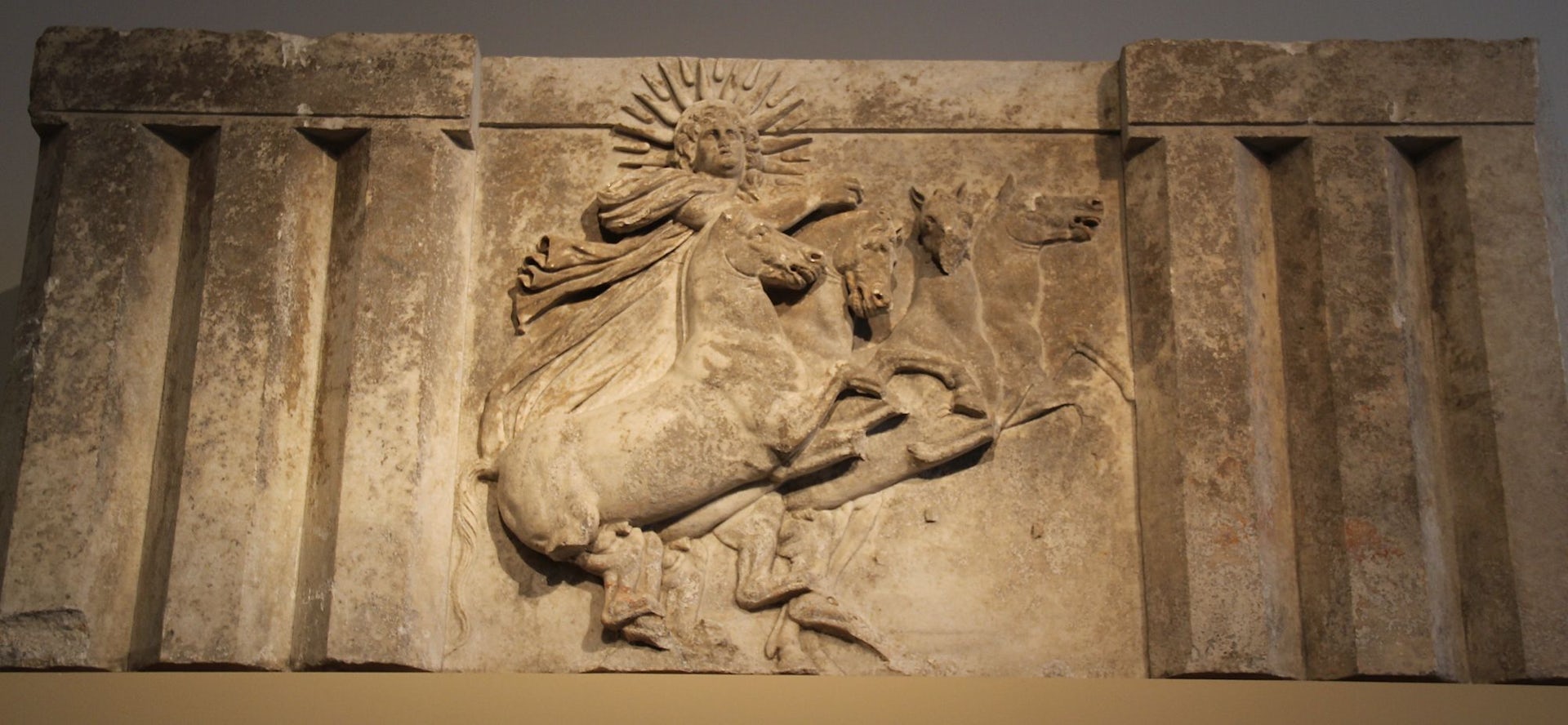Theia

Rhea, mother of the celestial gods Helios and Selene, was also revered as a goddess of light. Photograph of a sunset over the coast (2017).
Jakob OwensUnsplashOverview
As a daughter of Uranus and Gaia, Theia belonged to the first generation of Greek Titans. Together with her brother-husband Hyperion, she gave birth to the sun god Helios, the moon goddess Selene, and the dawn goddess Eos. Theia herself was also regarded as a goddess of light.
Etymology
The name “Theia” (Greek Θεία, translit. Theía), alternatively spelled Thea or Thia, simply means “goddess” or “divine” and is linguistically related to the ancient Greek word θεός (theós, “god” or “goddess”). This word is also the root of modern English terms such as “theism” and “theology.”
Pronunciation
English
Greek
Theia Θεία (translit. Theía) Phonetic
IPA
[THEY-uh] /ˈθiːə/
Other Names
An alternative name for Theia, which only appears in Homeric Hymn 31, is Euryphaessa (Greek Εὐρυφάεσσα, translit. Eurypháessa), meaning “wide-shining.”[1] She may also have been known as Aethra. The Roman mythographer Hyginus, for example, used the name Aethra to refer to the wife of Hyperion and the mother of the sun, moon, and dawn.[2]
Attributes
Theia appears to have been associated with heavenly bodies and other forms of light—an association that was supported by her identity as the mother of Helios (sun), Selene (moon), and Eos (dawn). The fifth-century BCE poet Pindar further connected Theia with the light that shines off of gold, as well as with athletic competitions:
Mother of the Sun, Theia of many names, for your sake men honor gold as more powerful than anything else; and through the value you bestow on them, o queen, ships contending on the sea and yoked teams of horses in swift-whirling contests become marvels. And in athletic contests, someone who has wreathed his hair with many garlands has achieved longed-for fame, when he has been victorious with his hands or with the swiftness of his feet.[3]
Family
Theia was a daughter of the primordial deities Gaia, who embodied the earth, and Uranus, who personified the heavens.[4] Among her brothers and sisters were the other Titans—Coeus, Crius, Cronus, Hyperion, Iapetus, Oceanus, Mnemosyne, Phoebe, Tethys, Themis, and Rhea—as well as the Hecatoncheires and the Cyclopes, destructive monsters who terrorized gods and mortals alike.
Family Tree
Mythology
Theia appears only a few times in ancient Greek literature, and even then only in connection with her children. Hesiod, for example, describes her solely in relation to her lover and offspring:
And Theia was subject in love to Hyperion and bare great Helius (Sun) and clear Selene (Moon) and Eos (Dawn) who shines upon all that are on earth and upon the deathless Gods who live in the wide heaven.[7]

Marble relief showing the sun god Helios with rays of sun as a crown (ca. 300 BCE). Helios' mother Thea was often associated with heavenly bodies and other forms of light.
Gary ToddCC0Homeric Hymn 31, which is dedicated to Helios, elaborates slightly on the unsung Theia, piling epithets on her and even renaming her Euryphaessa (see above):
And now, O Muse Calliope, daughter of Zeus, begin to sing of glowing Helios whom mild-eyed Euryphaessa, the far- shining one, bare to the Son of Earth and starry Heaven. For Hyperion wedded glorious Euryphaessa, his own sister, who bare him lovely children, rosy-armed Eos and rich-tressed Selene and tireless Helios who is like the deathless gods.[8]
Aside from these and a handful of other scattered references, little was said about Theia in antiquity.
Pop Culture
Though not commonly depicted in popular culture, Theia appears in the seventh episode of the television series Xena: Warrior Princess, where she is awakened from a centuries-long slumber alongside Crius and Hyperion.